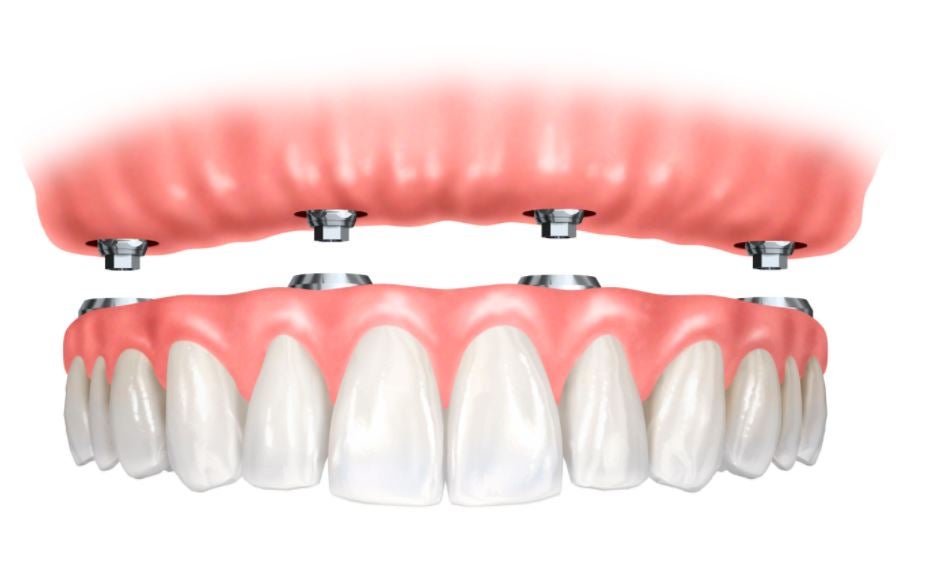The Only Guide for Dental Sense
The Only Guide for Dental Sense
Blog Article
Our Dental Sense Ideas
Table of ContentsSome Known Details About Dental Sense All About Dental SenseSome Known Details About Dental Sense The Definitive Guide to Dental Sense
are clinical devices surgically dental implanted right into the jaw to recover an individual's capability to chew or their look. They offer support for artificial (phony) teeth, such as crowns, bridges, or dentures. When a tooth is shed because of injury or disease, a person can experience difficulties such as quick bone loss, faulty speech, or modifications to chewing patterns that result in discomfort.Dental dental implant systems include an oral implant body and dental implant joint and might likewise include a joint fixation screw. Front tooth filling. The oral implant body is surgically inserted in the jawbone in area of the tooth's origin. The dental implant joint is generally affixed to the dental implant body by the abutment addiction screw and prolongs through gum tissues into the mouth to sustain the attached fabricated teeth
(https://www.gaiaonline.com/profiles/dentalsense1/46992240/)Framework of The Oral Implant System selecting oral implants, speak with your oral copyright concerning the possible benefits and risks, and whether you are a candidate for the procedure. Things to consider: Your overall health is an essential consider determining whether you are a great candidate for oral implants, for how long it will require to recover, and how much time the dental implant may remain in location.
Smoking might influence the recovery procedure and reduce the long-lasting success of the implant. The recovery process for the implant body might take a number of months or longer, during which time you normally have a momentary abutment instead of the tooth. the oral implant procedure: Thoroughly follow the dental health instructions offered to you by your oral company.
Dental Sense - An Overview
Implant failing can lead to the need for an additional surgery to repair or change the dental implant system. Brings back the capacity to eat Brings back aesthetic appearance Assists maintain the jawbone from diminishing due to bone loss Protects the wellness of the bordering bone and periodontals Helps maintain adjacent (nearby) teeth secure Improves high quality of life Damage to bordering all-natural teeth throughout dental implant positioning Injury to the surrounding cells during surgical procedure, such as sinus perforation Injury throughout surgical treatment (as an example, crack of bordering jawbone) Inadequate feature, such as seeming like the teeth do not attack together typically A feeling that the tooth hangs or turning in position arising from a joint screw loosening Implant body failing (looseness of the dental implant body) as a result of systemic infection, which might be more likely in patients with unrestrained diabetes because of regional infection in bone and periodontals sustaining the implant body as a result of postponed recovery, which might be most likely in patients who smoke Problem cleaning up the gum tissues around the dental implant, leading to bad dental hygiene Unattended gum condition Post-surgical tingling because of nerve impingement or damage Always inform healthcare suppliers and imaging technicians that you have dental implants prior to any kind of magnetic resonance imaging (MRI) or x-ray treatments.
FDA is not knowledgeable about any type of adverse occasions reported for MRI or x-ray treatments with oral implants. Dental implants systems are normally made from products that adhere to global agreement requirements of the International Organization for Standardization (ISO) or ASTM International. These criteria have details of what makes a safe product.

A dental implant is a framework that changes a missing tooth. With screw-like tools, the cosmetic surgeon inserts an implant into the jawbone, and it acts as an anchor for a fabricated tooth, called a crown.
Not known Details About Dental Sense
Some individuals are not eligible for oral implant surgery. It is for oral doctors to operate people with: intense illnessuncontrollable metabolic diseasebone or soft tissue illness or infectionIf these concerns are solved, an individual can have the surgical treatment. In, oral doctors avoid from operating individuals with: If individuals with any one of the above undergo dental implant surgery, there is a greater danger of the implant stopping working.

Oral dental implant surgery is a tailored process. It's not the exact same for every person. But the adhering to gives a general overview of what you can expect your dental practitioner, oral surgeon, periodontist or prosthodontist to do: Put the dental implant operatively. Offer you time to heal. Attach the message and final crown, bridge or denture.
Next off, your specialist will thoroughly put the dental implant right into your jaw. If your dental implant is near the front of your mouth, your dental expert will make a short-term tooth for you to wear till you recover.
The Best Guide To Dental Sense
Your company can tell you what to expect in your situation. Throughout the healing stage, your jawbone must fuse to the dental implant. This procedure, called osseointegration, is crucial for security and long-lasting success. This procedure can take anywhere from 3 to nine months. In some situations, it may take much longer.
As soon as your dental implant heals, your dental practitioner can attach the joint (small adapter message) and your last restoration (crown, bridge or denture). This usually takes regarding one hour to finish and might call for a 2nd minor surgical procedure. You shouldn't feel any type of discomfort during your dental implant treatment since your provider will certainly make use of medicine to numb your gum tissues.
Report this page